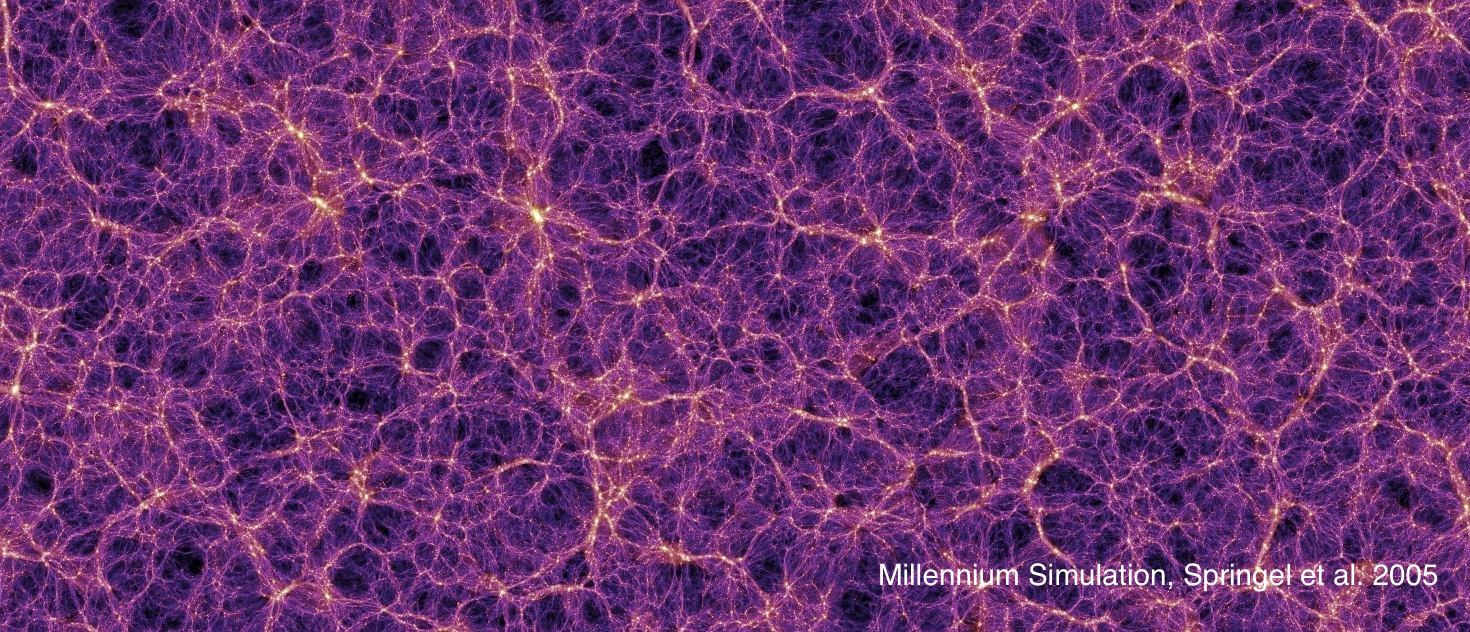Over the years, L-Galaxies evolved from being a galaxy formation model into a
large international collaboration of students, postdocs and group leaders
interested in contributing into the development of a self-consistent simulation of the formation
and evolution of galaxies from the very early universe until the
present day. In recent years significant effort was devoted into
creating a vibrant and supportive network, currently with nodes in
three different continents
(see
people), in order to
significantly extend the predictive capabilities of the
model. These include studies of the partition between different
gas phases, super-massive black hole physics and x-ray emission
properties, the distribution of heavy elements and the properties
of Milky-way like galaxies.
2015 marked a milestone for the development of L-Galaxies with its
first public release (for the source code of the model corresponding to
the henriques et al. 2015 version). This
coincided with a workshop in which more than 30 young students and
posdocs, from outside our direct collaboration, learned how to run
the model and analyse its predictions. The input from the members
of the collaboration, and the participants on the workshop, helped
to create these pages with the hope of allowing a growing community
to make use of the model in order to interpret observational data
and better understand the physics that shape galaxy formation and evolution.
Semi-analytic models of galaxy formation are built on a description of the redshift evolution of the mass and number density of dark matter halos in terms of their merger history (the so-called merger trees). The evolution of the baryonic component hosted by these halos is then followed by means of a set of parametrised, physically based equations, to describe the physical processes that affect galaxy formation and evolution. The Munich galaxy formation model includes physical prescriptions for processes such as gas cooling, star formation, supernova feedback, formation and growth of black holes, AGN feedback and galaxy interactions and mergers that have been gradually developed over the years. A few simple slides describing the main components of the model can be found in LGalaxies_slides.pdf .
The recent Henriques2015a release scales the Millennium and Millennium-II simulations to the cosmology of the first year PLANCK data. MCMC methods were used to explore the full high-dimensional parameter space of the galaxy formation model in order to identify regions which could reproduce the observed abundances and quenched fractions of galaxies as a function of stellar mass from z=3 down to z=0. Matching these more extensive and more precise observational results required a delayed reincorporation of wind ejecta, a lower surface density threshold for turning cold gas into stars, the elimination of ram-pressure stripping in haloes less massive than \(∼10^{14} M_{\odot}\), and a modification to the radio mode feedback model. These changes cure the most obvious failings of previous versions of the model, namely the overly early formation of low-mass galaxies and the overly large fraction of them that are passive at late times. 4 million CPU hours were used, and over 20 million representations of the Universe were evaluated, in order to build this model.
Catalogues released for this model include snapshots of the (sub)halo and galaxy populations with extended photometric coverage and star formation and metallicity histories, as well as lightcones with photometry based on two different stellar population synthesis models. These are available in the Millennium Database.
Full description of the current model release: L-Galaxies_Documentation.pdf
MNRAS article: Henriques et al., 2015, MNRAS, 451, 2663
The first L-Galaxies Workshop took place at MPA, Garching (10-12, Feb., 2016). The Henriques2015a version of the L-Galaxies code was publicly released and ~40 participants followed the tutorials on how to run it, modify it and use the MCMC sampler.
A snapshot of the dark matter only simulation:

On the left, simulated galaxies seen through a lightcone, on the right, real data from HST:
